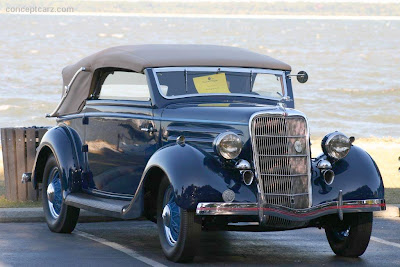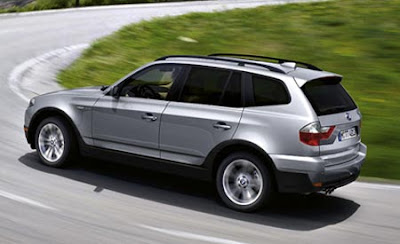
The first thing you notice about Daihatsu’s new Terios SUV is that it is much bigger than its predecessor - and all the better for it.
How much bigger? Well, it’s 230mm longer and 190mm wider. It looks smarter too, with a new purposeful front end featuring a deep front bumper topped by a flat but curved bonnet. The rear end has a side opening door with a rear-mounted spare wheel and a window line that appears to wrap around into the main body of the car. It has a hint of RAV4 about it, which is not surprising considering Daihatsu’s parent company is Toyota.
The company is so confident in the Terios that they are already warning of restricted numbers worldwide because it is so popular at home.
The Terios looks fun and capable. It has a fairly long wheelbase coupled with a wide track and short overhangs at each end, making it suitable for off-road excursions. It has a full-time 4WD system, complete with an electronic differential-lock for sticky situations. Although the nearest most of them will get to going off-road is putting a wheel on the kerb and despite the fact that I didn’t get to test it in the wild, if the Terios is anything as good as the company’s old Fourtrak, then it is more capable than it looks.
The new Terios comes in three forms: S, SX and SE. The latter has an automatic transmission, while the other two are fitted with a 5-speed manual box. Prices range from £12,995 for the S to £14,995 for the SE. I tested the SX at £14, 295 but, whichever one you choose; it will arrive with a 1.5-litre petrol engine under the bonnet.
This unit produces 105PS (103.5bhp) at 6,000rpm and just under 140Nm of pulling power at 4,400rpm. Top speed for the S and SX is almost 100mph - 99.4mph to be exact, while the SE has a top speed of just over 93mph. It takes 12.2 seconds to get from 0 to 60mph in the test car and a smidgeon less in the S and 13.2 seconds in the SE.
At first, I thought the Terios was slow and a little boring. The gear change on the test car was stiff and I couldn’t get a clean, smooth change. Then I went for a proper test drive and it changed my mind. I found that to get the best out of the engine, it has to be driven and that from second gear onwards the transmission proves to be very flexible, which newer drivers might find forgiving. It is also very sprightly and the raucous noise from the engine makes it sound like the rally car, it thinks it is.
The stiff suspension makes the ride a bit bumpy and speed humps are to be avoided. Even at slow speeds, there is a danger of losing your fillings. Having said that, it is a very stable car that seems to enjoy swift changes of direction and along with the positive steering, it makes country lanes fun.
Motorway journey are accomplished with aplomb although I would have liked another gear. Around town, the good all-round visibility and higher seating position helps with guessing what the other traffic is about to do. The Terios also proved to be very manoeuvrable in tight spots aided by the rear parking sensors, which are standard across the range. Usually, parking sensors are a little over-cautious but the system in the Daihatsu is just right.
In terms of specification, even the entry-level S comes with air-conditioning, four electric windows (not all do), driver, passenger and side airbags and ABS with EBD. Moving up to the SX, which is expected to be the most popular, adds alloy wheels with fatter tyres than the other two trims, two-tone wheel arch extensions, side skirts, roof-rails, front fogs and a multifunctional display, amongst other things. The SE is much the same as the SX but has different alloys and colour-keyed side skirts.
The Terios comes with five doors for more convenience and has a surprisingly spacious interior. The front seats are firm but comfortable and the driver is faced by a rake-adjustable steering wheel and a very smart fascia. The silver-coloured, centre console has a touch of ‘Cyberman’ about it, with large, louvred air vents and chunky comfort control dials. Above these is a black-faced radio/CD system. It is simple in its function and probably wouldn’t appeal to most Hi-fi buffs but it does, in fact, produce a good quality sound equal to that in some more expensive cars.
At the time of writing, it has been announced that between September 1 and October 31 2006 , all new Terios’ will come with a free satellite-navigation system and the range has gained an extensive options list featuring such items as a hard spare-wheel cover (£225), aluminium side steps, also £225 and full leather trim in various colours for just over £1,028.
Back to the cabin. The rear seat has a bench squab and sits three in comfort, each with their own 3-point seatbelt. It has a 60:40 split, fold and tumble function, which is easily accomplished although you have to watch out for the stud fixings on the bottom as they get a little hot. Folding the rear seats increases the luggage capacity from 390-litres to an undisclosed figure that is capable of holding a mountain bike.
According to Daihatsu, the Terios has ‘politically correct’ fuel economy with figures of 28.8 mpg, and 39.8 mpg for the urban and extra-urban cycles, resulting in a combined figure of 34.9 mpg while exhausting 191g/km of CO2.
The Terios is well built, although the paintwork seemed to mark easily. However, as with all Daihatsu's, it comes with a three-year, unlimited mileage warranty with roadside assistance and an 8-year anti-perforation warranty. Can’t be bad.

























